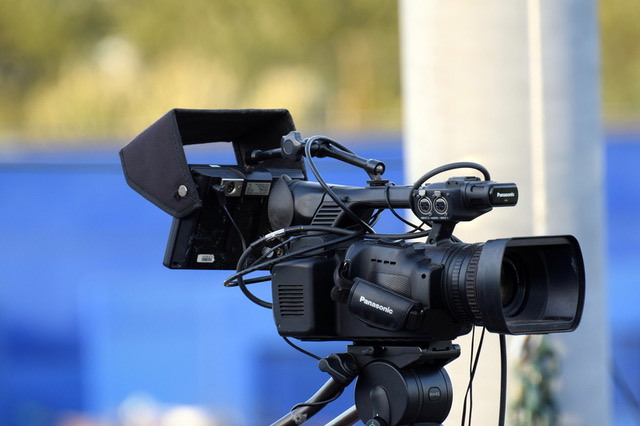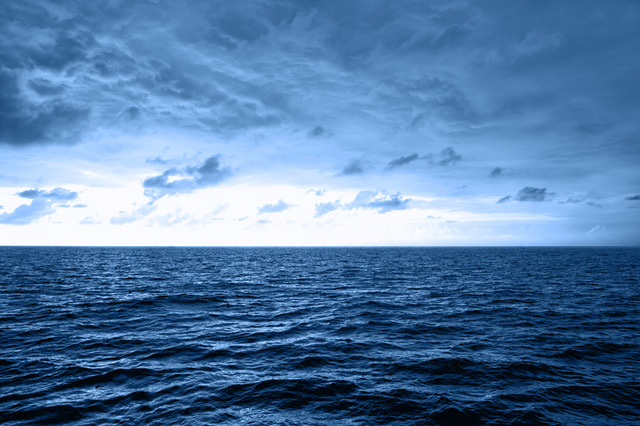
-
 Australian seaweed farm tackles burps to help climate
Australian seaweed farm tackles burps to help climate
-
Judgment day in EU chief's Covid vaccine texts case

-
 Trump set to meet Syrian leader ahead of Qatar visit
Trump set to meet Syrian leader ahead of Qatar visit
-
Misinformation clouds Sean Combs's sex trafficking trial

-
 'Panic and paralysis': US firms fret despite China tariff reprieve
'Panic and paralysis': US firms fret despite China tariff reprieve
-
Menendez brothers resentenced, parole now possible

-
 'Humiliated': Combs's ex Cassie gives searing testimony of abuse
'Humiliated': Combs's ex Cassie gives searing testimony of abuse
-
Latin America mourns world's 'poorest president' Mujica, dead at 89

-
 Masters champion McIlroy to headline Australian Open
Masters champion McIlroy to headline Australian Open
-
Sean Combs's ex Cassie says he coerced her into 'disgusting' sex ordeals

-
 McIlroy, Scheffler and Schauffele together for rainy PGA battle
McIlroy, Scheffler and Schauffele together for rainy PGA battle
-
Uruguay's Mujica, world's 'poorest president,' dies aged 89

-
 Lift-off at Eurovision as first qualifiers revealed
Lift-off at Eurovision as first qualifiers revealed
-
Forest striker Awoniyi placed in induced coma after surgery: reports

-
 'Kramer vs Kramer' director Robert Benton dies: representative
'Kramer vs Kramer' director Robert Benton dies: representative
-
Tatum suffered ruptured right Achilles in playoff defeat: Celtics

-
 US stocks mostly rise on better inflation data while dollar retreats
US stocks mostly rise on better inflation data while dollar retreats
-
Winning farewell for Orlando Pirates' Spanish coach Riveiro

-
 Lift-off at Eurovision as first semi-final takes flight
Lift-off at Eurovision as first semi-final takes flight
-
UN relief chief urges action 'to prevent genocide' in Gaza

-
 Baseball pariahs Rose, Jackson eligible for Hall of Fame after league ruling
Baseball pariahs Rose, Jackson eligible for Hall of Fame after league ruling
-
Scheffler excited for 1-2-3 group with McIlroy, Schauffele

-
 Sean Combs's ex Cassie says he forced her into 'disgusting' sex ordeals
Sean Combs's ex Cassie says he forced her into 'disgusting' sex ordeals
-
Uruguay's 'poorest president' Mujica dies aged 89

-
 Senior UN official urges action 'to prevent genocide' in Gaza
Senior UN official urges action 'to prevent genocide' in Gaza
-
'Kramer vs Kramer' director Robert Benton dies: report

-
 Sinner moves through gears to reach Italian Open quarters
Sinner moves through gears to reach Italian Open quarters
-
Massages, chefs and trainers: Airbnb adds in-home services

-
 Republicans eye key votes on Trump tax cuts mega-bill
Republicans eye key votes on Trump tax cuts mega-bill
-
Brazil legend Marta returns for Japan friendlies

-
 McIlroy, Scheffler and Schauffele together to start PGA
McIlroy, Scheffler and Schauffele together to start PGA
-
Jose Mujica: Uruguay's tractor-driving leftist icon

-
 Uruguay's ex-president Mujica dead at 89
Uruguay's ex-president Mujica dead at 89
-
It's showtime at Eurovision as semis begin

-
 DeChambeau says '24 PGA near miss a major confidence boost
DeChambeau says '24 PGA near miss a major confidence boost
-
Gaza, Trump dominate politically charged Cannes Festival opening

-
 Carney says new govt will 'relentlessly' protect Canada sovereignty
Carney says new govt will 'relentlessly' protect Canada sovereignty
-
Gaza rescuers says Israeli strikes kill 28 near hospital

-
 Schauffele still has something to prove after two major wins
Schauffele still has something to prove after two major wins
-
US inflation cooled in April as Trump began tariff rollout

-
 US reverses Biden-era export controls on advanced AI chips
US reverses Biden-era export controls on advanced AI chips
-
Trump, casting himself as peacemaker, to lift Syria sanctions

-
 US Ryder Cup captain Bradley eyes LIV's Koepka, DeChambeau
US Ryder Cup captain Bradley eyes LIV's Koepka, DeChambeau
-
Musetti battles Medvedev and match-point rain delay to reach Rome quarters

-
 Rights groups urge court to halt UK fighter jet supplies to Israel
Rights groups urge court to halt UK fighter jet supplies to Israel
-
Steamy excitement at Eurovision contest

-
 Forest hit back over criticism of owner Marinakis over Nuno clash
Forest hit back over criticism of owner Marinakis over Nuno clash
-
Sean Combs's ex Cassie says he 'controlled' her life with violence

-
 Mali dissolves political parties in blow to junta critics
Mali dissolves political parties in blow to junta critics
-
Blackmore's history-making exploits inspiring to all: de Bromhead


'Visionary' US astrophysicist Eugene Parker dead at 94
Eugene Parker, a pioneering American astrophysicist whose mathematical prediction that charged particles streamed from stars in a solar wind was met with disbelief before he was ultimately vindicated, has died aged 94, NASA said on Wednesday.
Parker was hailed as a visionary who laid the groundwork for the field of heliophysics, the science of understanding the Sun and its interactions with Earth and the solar system, including space weather.
In 2018, he became the first person to witness the launch of a spacecraft bearing his name, NASA's Parker Solar Probe.
"We were saddened to learn the news that one of the great scientific minds and leaders of our time has passed," said NASA Administrator Bill Nelson in a statement. Parker died Tuesday, according to the University of Chicago, his longtime academic home.
"Gene Parker was a legendary figure in our field -- his vision of the Sun and the solar system was way ahead of his time," added Angela Olinto, dean of the Physical Sciences Division at the University of Chicago.
Born on June 10, 1927 in Michigan, Parker earned a bachelor's degree in physics from Michigan State University and a PhD from Caltech, then taught at the University of Utah before settling at UChicago in 1955.
He began studying the temperature of the Sun's corona, and his calculations showed the conditions should produce a supersonic flow of particles off the surface.
The idea was initially met with skepticism -- even ridicule.
- 'Utter nonsense' -
"The first reviewer on the paper said, 'Well, I would suggest that Parker go to the library and read up on the subject before he tries to write a paper about it, because this is utter nonsense,'" Parker told UChicago News in 2018.
His idea only saw publication in the Astrophysical Journal when then editor and future Nobel prize winner Subrahmanyan Chandrasekhar realized he could not find a flaw in Parker's math, and overrode the objections of both of the reviewers.
The theory was proved correct in 1962 when NASA's Mariner II spacecraft, which flew to Venus, encountered the stream of particles, called the solar wind.
Scientists now know that solar wind blankets all the planets, protecting them from harmful radiation, but also at times disrupting communications here on Earth when solar flares occur.
Parker also proposed the idea of "nanoflares" -- small solar explosions that occur all over the Sun -- which are responsible for its superheated corona. The corona is hotter than the surface itself, a fact that couldn't be explained by known physics at the time.
He went on to study cosmic rays, the magnetic fields of galaxies and myriad other topics, and won numerous accolades including the US National Medal of Science, the Kyoto Prize, the Crafoord Prize and the American Physical Society Medal for Exceptional Achievement in Research.
"Anyone who knew Dr. Parker, knew that he was a visionary," said Nicola Fox, director of NASA's heliophysics division.
NASA's Parker Solar Probe, named after Parker, was launched in 2018, circling the Sun closer than any spacecraft had previously ventured.
It has already sent back troves of valuable data leading to new discoveries about space weather and the detection of a long theorized zone where the Sun's radiation vaporizes all cosmic dust.
B.Finley--AMWN